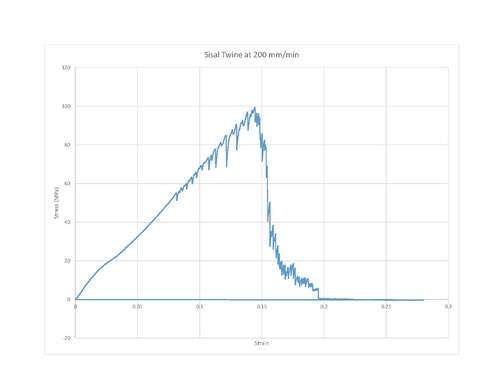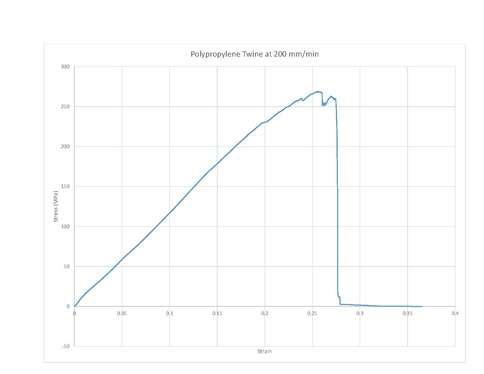Baling twine

Baling twine or baler twine is a small diameter sisal or synthetic twine used to bind a quantity of fibrous material (notably hay or straw) into a more compact and easily stacked form. Tensile strengths of single-ply baling twine range from 95 psi (0.66 MPa) to 325 psi (2.24 MPa).[1][2]
Properties
Sisal fibers are made of 65% cellulose, 12% Hemicellulose, 9.9% Lignin, and 2% Waxes. Sisal fibers can be available as plaid, herringbone, or twill. The fibers have good sound and impact absorbing properties. They have natural anti-static properties that do not trap dust or absorb moisture easily. The original plain color allows it to easily be dyed and allow for a large range of different color. Sisal twine is also naturally biodegradable.[3]
Polypropylene Twine is made out of 100% polypropylene. It is lightweight, inexpensive, strong, and has low density, which allows it to float. It has amazing strength and knots easily.[4]
Processing
Sisal fibers are extracted from the Agave plant; the leaves of the plant are cut and then taken to a machine that splits them apart and extracts the sought after fiber (this process is called decortication). The fibers are then fluffed and brushed out before being washed and then left to dry for 24 hours. The fibers are then sorted based on grade; the lower grades are used for twine. The fibers are brushed together to be made into long strands. The strands are loaded onto a twisting type machine to make the twine, which is made by twisting multiple sisal fibers together into a single strand. The more strands there are, the thicker the twine will be, and it will be able to carry heavier weight.
Applications
Baling twine is used in farming to bind straw or hay bales together (small square, large square, and large round bales) and can be used as rope; it is also strong and durable, so can be used for many rope like applications.[6]
Sisal twine vs. polypropylene twine
The tensile testing of the polypropylene and sisal twines was done with the aid of an Instron tensile testing machine using capstan grips in the Material Science Lab at the University of Wisconsin - Eau Claire. At the point of each type of twine’s ultimate tensile strength, it is apparent that polypropylene is a stronger material. With approximately an ultimate tensile strength of 270 MPa, it has more than 100% more tensile strength than that of sisal twine which has an ultimate tensile strength of 100 MPa. The two twines broke differently, however, as it can be seen in the two videos. Polypropylene twine had a straight break, where all of its fibers broke at once; this resulted in the straight line dropping to zero on the graph. The sisal twine broke in a different fashion. As the force load increased on the twine sample, individual fibers that were carrying the load broke and new ones became engaged. Thus was created the popping noises in the video; these properties directly correlate to the strength properties. Because all the fibers are engaged at once in polypropylene, it gives the twine high strength; the downside is that all the fibers break at once. Because only certain fibers in sisal twine carry the force of the load at one time, it doesn’t have as high of a strength as polypropylene twine. It does, however, allow the twine to stay intact much longer as each new fiber becomes engaged.[7]


References
- ↑ "Poly Bailer Twine, 20,000 Ft, 110 Lb Tensile Strength". Retrieved 20 March 2014.
- ↑ "Polypropylene Twine". Schermerhorn Bros. Co. Retrieved 20 March 2014.
- ↑ "Sisal Fiber, Properties of Sisal Fiber, Uses/Applications of Sisal Fiber". Textile Learner. textilelearner. Retrieved 7 December 2015.
- ↑ "All About Rope". EI8IC's Ham Radio Resources Website. Irish and International. Retrieved 7 December 2015.
- ↑ "Sisal Fibre Production". Youtube. Peter G. Retrieved 7 December 2015.
- ↑ "What are the Uses of Twine". Innovateus. Innovateus. Retrieved 7 December 2015.
- ↑ Videos of the testing: polypropylene twine - https://www.youtube.com/watch?v=b38OVa__pKU sisal twine - https://www.youtube.com/watch?v=NzrX3QNFrEU
External links
![]() Media related to Baling twine at Wikimedia Commons
Media related to Baling twine at Wikimedia Commons